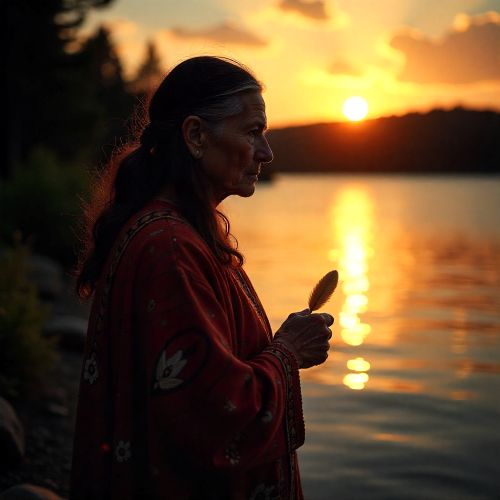Cree Mythology
Cree mythology is one of the richest traditions among Indigenous peoples of North America, reflecting the close bond between the Cree people and the land, waters, and skies that sustain them. Rooted in oral storytelling, songs, and ceremonies, Cree myths were passed down through generations to teach cultural values, survival skills, and spiritual lessons. These stories are not only entertainment but living teachings that guide the community’s way of life, emphasizing respect for nature, balance with the environment, and the importance of kinship. Cree mythology blends the human world with the spiritual realm, where animals, spirits, and natural forces all play essential roles.
A central theme in Cree mythology is the belief in interconnectedness and the sacred presence within all forms of life. Animals such as bears, wolves, and birds are considered powerful spiritual beings that can guide, protect, or challenge humans. Dreams are also highly significant in Cree traditions, often seen as messages from the spirit world that help shape decisions and provide guidance. Storytelling was a key way to pass along this wisdom, with elders recounting legends during long winters, ensuring that children and future generations understood their cultural responsibilities and relationship with the world around them.
Many Cree stories explain natural phenomena and teach moral lessons through legendary figures and cultural heroes. Trickster characters appear frequently, blending humor with wisdom to show the consequences of selfishness, pride, or carelessness. These figures reflect human flaws but also teach resilience and adaptability, qualities essential for life in challenging environments. Other myths speak of creation, the origins of the earth, and the role of spirits in shaping the landscape, reinforcing the Cree worldview that the land itself is sacred and alive. Through these tales, the Cree people found both explanations for the mysteries of the natural world and a framework for living in balance with it.
Today, Cree mythology continues to hold strong cultural importance, both within Cree communities and in wider global appreciation. Ceremonies, powwows, and traditional teachings keep these myths alive, while artists, writers, and filmmakers bring Cree stories to new audiences. At the same time, Cree elders and knowledge keepers ensure that oral traditions remain at the heart of cultural preservation. For modern readers, exploring Cree mythology is not only a journey into fascinating legends but also an encounter with a worldview that emphasizes respect, humility, and harmony with the living world. As part of the broader legacy of Indigenous wisdom, Cree mythology continues to inspire resilience and cultural pride in the present day.


